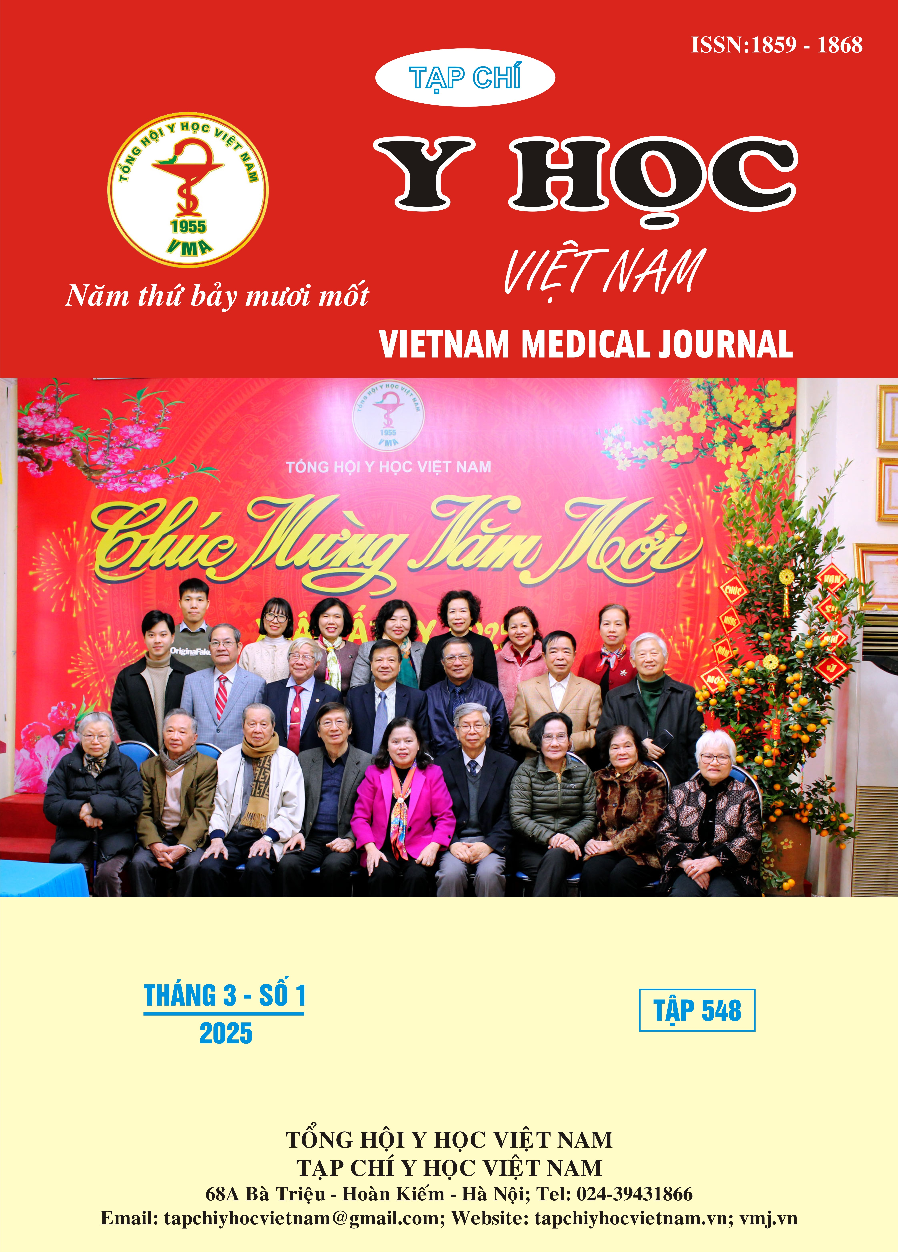SHORT-TERM SAFETY AND EFFICACY OF DUAL-CHAMBER PACEMAKERS WITH ANTI REFLEX SYNCOPE FUNCTIONALITY
Main Article Content
Abstract
Objective: To evaluate the short-term safety and efficacy of dual-chamber pacemakers with anti-reflex syncope functionality in patients with neurally mediated reflex syncope. Background: Currently, no studies in Vietnam have assessed the safety and efficacy of dual-chamber pacemakers with anti-reflex syncope functionality. Method: Retrospective cohort study. Result: Seventy-eight patients with dual-chamber pacemakers for anti-reflex syncope functionality were enrolled, with 69,2% (54 patients) being female and an average age of 46,5 ± 16,2 years. All patients received dual-chamber pacemakers with anti-reflex syncope functionality, with 43,6% (34 patients) utilizing closed-loop stimulation (CLS) and 56,4% (44 patients) utilizing the rate drop response mechanism. Pacing parameters included atrial and ventricular pacing thresholds of 0,7 ± 0,2 V and 0,8 ± 0,2 V, respectively; atrial and ventricular sensing thresholds of 3,5 ± 1,5 mA and 12,7 ± 5,8 mA, respectively; and atrial and ventricular impedance values of 633,6 ± 182,1 Ohms and 687,2 ± 200 Ohms, respectively. No complications were reported during the 6-month follow-up, with a recurrence rate of 6,4% (5 patients) and no statistically significant difference between the two anti-reflex syncope mechanisms (p = 0,622). Conclusion: Pacing in patients with neurally mediated reflex syncope, regardless of the prevention mechanism used, was effective, with a 6,4% recurrence rate over a 6-month follow-up period and no recorded complications.
Article Details
Keywords
reflex syncope, dual-chamber pacemaker, closed-loop stimulation (CLS), rate drop response
References
2. Shen WK, Sheldon RS, Benditt DG, et al. 2017 ACC/AHA/HRS guideline for the evaluation and management of patients with syncope: A report of the American College of Cardiology/American Heart Association Task Force on Clinical Practice Guidelines and the Heart Rhythm Society. Heart Rhythm. Aug 2017;14(8): e155-e217. doi:10.1016/j.hrthm.2017.03.004
3. Chen LY, Shen WK, Mahoney DW, Jacobsen SJ, Rodeheffer RJ. Prevalence of syncope in a population aged more than 45 years. Am J Med. Dec 2006;119(12): 1088.e1-7. doi:10.1016/ j.amjmed.2006.01.029
4. Glikson M, Nielsen JC, Kronborg MB, et al. [2021 ESC Guidelines on cardiac pacing and cardiac resynchronization therapy Developed by the Task Force on cardiac pacing and cardiac resynchronization therapy of the European Society of Cardiology (ESC) With the special contribution of the European Heart Rhythm Association (EHRA)]. G Ital Cardiol (Rome). Jul 2022;23(7 Suppl 1):e1-e94. Linee guida ESC 2021 su stimolazione cardiaca e terapia di resincronizzazione cardiaca elaborate dalla Task Force su stimolazione cardiaca e terapia di resincronizzazione cardiaca della Società Europea di Cardiologia (ESC) con il contributo straordinario della European Heart Rhythm Association (EHRA). doi:10.1714/3824.38087
5. Hasan F, Nedios S, Karosiene Z, et al. Perioperative complications after pacemaker implantation: higher complication rates with subclavian vein puncture than with cephalic vein cutdown. J Interv Card Electrophysiol. Jun 2023; 66(4): 857-863. doi:10.1007/s10840-022-01135-x
6. Raviele A, Giada F, Menozzi C, et al. A randomized, double-blind, placebo-controlled study of permanent cardiac pacing for the treatment of recurrent tilt-induced vasovagal syncope. The vasovagal syncope and pacing trial (SYNPACE). Eur Heart J. Oct 2004;25(19):1741-8. doi:10.1016/j.ehj.2004.06.031
7. Brignole M, Tomaino M, Aerts A, et al. Benefit of dual-chamber pacing with Closed Loop Stimulation in tilt-induced cardio-inhibitory reflex syncope (BIOSync trial): study protocol for a randomized controlled trial. Trials. May 4 2017;18(1):208. doi:10.1186/s13063-017-1941-4
8. Brignole M, Menozzi C, Moya A, et al. Pacemaker therapy in patients with neurally mediated syncope and documented asystole: Third International Study on Syncope of Uncertain Etiology (ISSUE-3): a randomized trial. Circulation. May 29 2012;125(21):2566-71. doi:10.1161/circulationaha.111.082313


